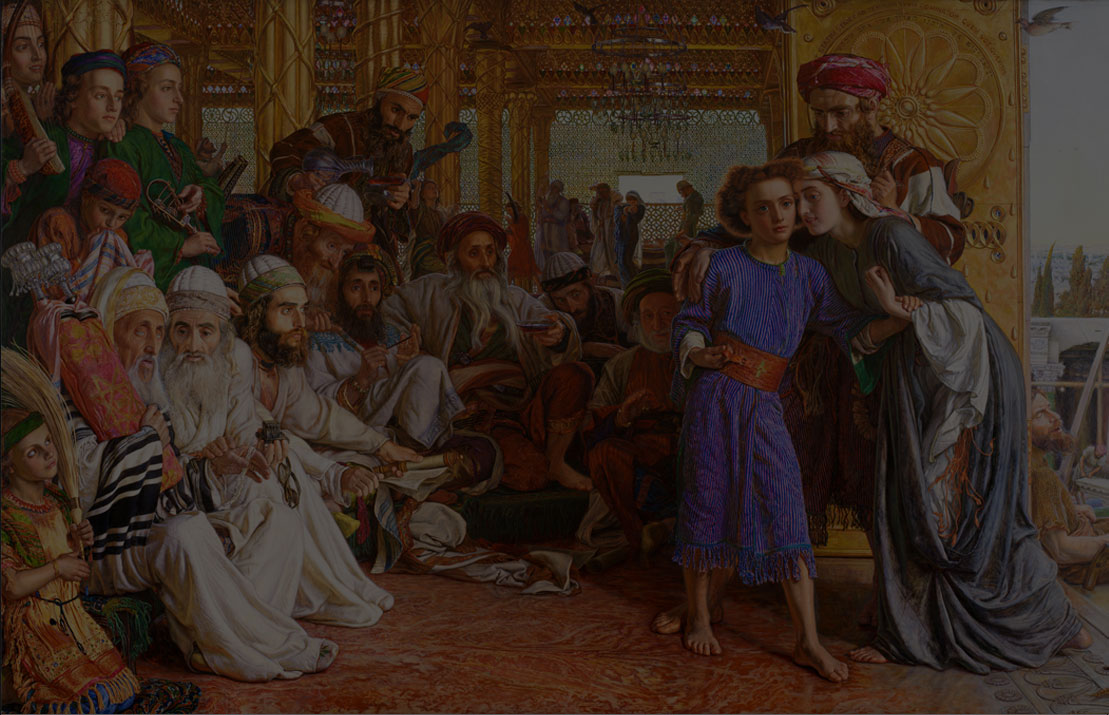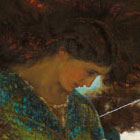In his 1842 poem "The Lady of Shalott," Alfred, Lord Tennyson (1809–1892) recounts the tragic story of a lady who records the events of King Arthur’s reign in a woven tapestry, but who must do so by viewing reflections in a mirror. Hunt explained that she was to "weave her record, not as one mixing in the world . . . but a being sitting alone; in her isolation she is charged to see life with a mind supreme and elevated in judgment."
Two versions of The Lady of Shalott are exhibited here. Although highly finished, the smaller example served primarily as a preparatory study for the larger picture, which is the last of Hunt’s illustrations for the poem and one of his most complex and extraordinary conceptions. In it, the lady’s chamber is decorated with emblems of devotion to duty, with the Virgin and Child in one of the roundels and Hercules in the other. Her weaving shows Sir Galahad presenting the Holy Grail to King Arthur, while the bas-relief above depicts female spirits guiding and protecting the planets. As the handsome Sir Lancelot passes on horseback, the lady yields to temptation and stares out her window. Having looked at the real world rather than its reflection in a mirror, she unleashes a curse that ultimately destroys her. The violence wrought by her recognition of passion—her gazing directly upon Lancelot as he rides toward Camelot—animates the composition. The mirror shatters, the doves flee, the lamp is extinguished, her hair billows upward, and her tapestry unravels explosively to ensnare her. According to the artist, the parable, as interpreted in his painting, illustrated "the failure of a human soul towards its accepted responsibility." Hunt also understood "The Lady of Shalott" as a metaphor for the duty of an artist to maintain some distance from reality, so as to protect his or her vocation.
Hunt worked and reworked this picture over a decade, finishing it with studio assistance just before going blind. An elaborate frame of the artist’s own design reinforces the theme. The columns are ringed with prickly briar, the crown has "Pandora’s box with hope lying hid," and an urn for the lady’s ashes ominously punctuates the bottom rail.



